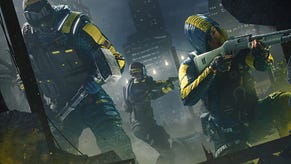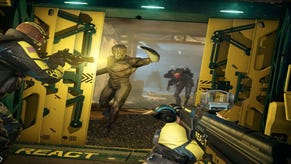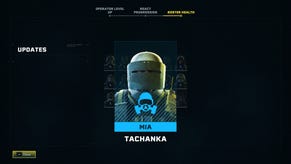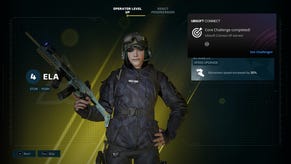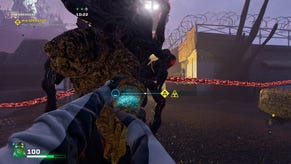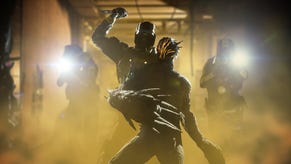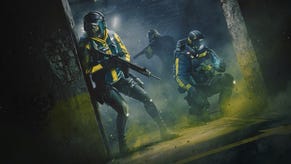Rainbow Six: Extraction review: Ubisoft’s experimental shooter tries its best, but it’s still under Siege
In this tactical, sci-fi FPS from Ubisoft Montreal, I feel caught between past successes and a bold new direction.
I’m left scratching my head with Rainbow Six: Extraction. This sci-fi FPS from Ubisoft Montreal feels like it's pulling in multiple directions, trying to appeal to multiple crowds. It’s marked with flourishes that go a long way to express the passion that went into it, but disappoints a little where it matters. Extraction is fun, for sure, but it’s hard to ignore its clear-and-present problems.
For those not in the know, Rainbow Six: Extraction is built atop the foundation of a pre-existing, rather excellent, multiplayer FPS called Rainbow Six: Siege – a game that has attracted a diehard community thanks to an engaging character-based experience that doesn’t hold your hand at all. A bullet to the head or a few to the chest and you’re dead; a misplaced trap or a quick glance away from a doorway during a tense mission and the game is over.
What Ubisoft Montreal has essentially done with Extraction is take the foundation of Siege - the gunplay, engine, and some of the operators - and built a new game around it. A game without the PvP, but with a whole new customisation system, several distinct locations with numerous contaminated sites, reworked operator kits, and aliens. If nothing else, it ensures that if you felt at home peeking around corners with Siege, you’ll feel at home here.
You, either on your own or with a squad of up to three other players, must venture into regions contaminated by Archeans (the name given to the creepy mould monsters you'll encounter) spread across the USA. You must complete a number of randomised objectives, ranging from stealthily taking down unsettling alien nests, planting a bomb and defending it, or wiping out a certain elite enemy. Having either completed these objectives – or getting seriously munched up by the foes you encounter – you can then extract back to base where you are showered in experience points, both for your character and an overall progression level.
As your characters level up, they unlock new guns and perks that alter their abilities. Sometimes these are simple – a reduction in damage taken, or an increase in how many healing darts Doc can carry at once. Other times they’re fun new modifiers, like Sledge’s ability to charge up his sledgehammer attack and stun certain enemy types with it. As for your progression level, this is essentially a tracker of your overall progress through the game - unlocking new operators, locations, gadgets, and eventually endgame modes like Assignments and the Maelstrom Protocol.
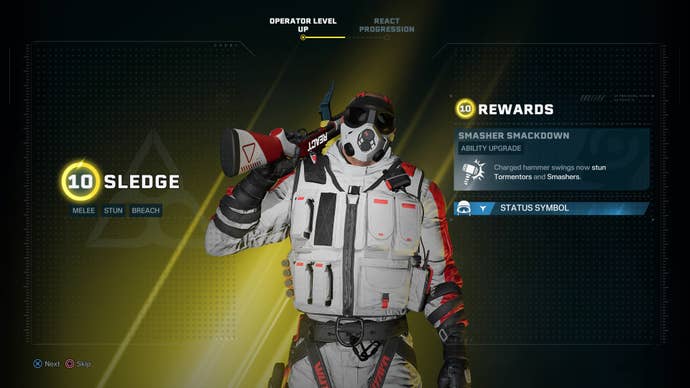
As gameplay loops stand, it’s a fairly engaging one. At lower levels you can pretty much run in with whatever guns and equipment you want, blasting away at aliens like a maniac. At higher difficulties, you do need to think about what operators and gear would work best. While initially I didn’t see the point in droning ahead to scout out the area, further on in the game information on what dangers lurk in each room (and how to best make my way towards the objective) became invaluable. Something that worried me is that in a PvE game like Extraction, the benefits of taking your time and slowly making progress would be lost, but I’m happy to find my concerns were unfounded.
However, and this may not come to much of a surprise to fans of the series, this is not the sort of game you play on your lonesome – despite that being an option made available to you. Solo, the experience is passable; you can venture into these missions, complete all the objectives without many issues, and extract with a nice XP haul. This approach starts to fall apart as your progress into challenging content.
First, while the game does a good job of working around mission difficulty when it comes to the density of enemies, and how many creepy-crawlers Extraction throws at you at once, there are times where cracks start to show. Take bomb defence – you have to defend a site for around two minutes while waves of enemies rush towards you. As a team, you can reinforce all the walls and prepare for attack with clear funnel points – nice and tactical! But, if you’re alone with only three wall reinforcements available, you often find yourself lacking the tools to do this. On higher difficulties, this can ruin a run.
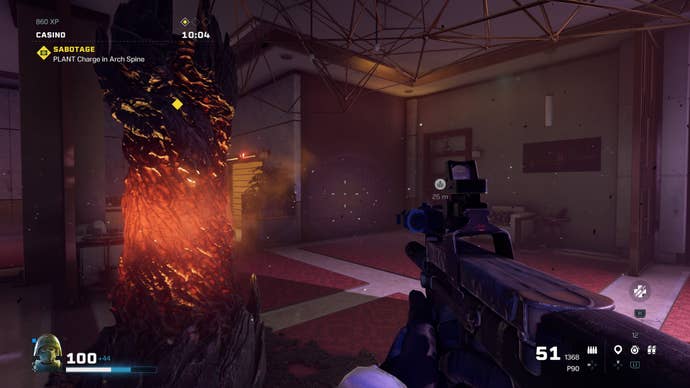
When these runs do go wrong, you may even fail to extract to safety. In this scenario, your operator is MIA, and needs rescuing. This is presented as a serious issue, all the XP your character has earned for the progress level will be taken off, and is at risk of permanently being lost unless you rush back in and bring them home. When I first heard about this, I was stoked! This is that unique twist, that special something that adds some stakes to the loop.
However, it somewhat falls flat. If you lose a valuable operator on a high-difficulty mission, you can just go into that mission on the easiest difficulty and rescue them with ease. This turns what should be a genuinely stressful situation into homework, a ten-minute diversion from the missions I actually want to be playing. Not to sound masochistic, but I’m playing a Rainbow Six game; there’s an expectation that the game will be punishing. Force me to dive back into those harder difficulties (or make it scale with operator level), limit the gadgets I can take with me while an operator is MIA; do something to get me sweating, not sighing.
Each character also has distinct roles that lend to their strengths, but as a solo player it can often feel like you’re lacking the tools to excel. Take Tachanka - who I’m happy to report returns here with his old mounted LMG. He’s great at defending points on the map, but if you have to stealth takedown an enemy to proceed, his lumbering movement feels equal parts slow and frustrating. It’s like playing a game of Blackjack with a single card in your hand - sure you can still win some chips, but on certain rounds you feel unequipped to succeed.
In a squad the game shows all its strengths. A well constructed team composition allows you to tactfully breach and clear maps room-by room, droning ahead to point out nastier foes and then working together to gun them down before they cause any problems. On more difficult content, you get that tense experience the best R6 games are known for.
Let’s start talking about those Archeans, the alien parasite that you’ll either be working around or through. I’m in two minds on this topic. One one hand, the sprawling black organic material that covers rooms like black mould in a damp university apartment is a great way of mixing up your typical Rainbow Six urban environments. I especially like the nests being these bright red pulsating cysts, and how everything seems to squirm and wriggle when you alert enemies. Better yet, if you do alert the Acheans, that black goop spreads rapidly from the nests, coating everything in sludge that slows you down. If nothing else, the game does a good job at selling the aesthetic of a parasitic invasion.
But, and that is a big but, I feel the game doesn’t quite go far enough with this angle. This is especially true of the multitudes of enemies you face in missions. Sometimes they nail it like with the bloater and Smasher that are especially distinct - while other designs can feel a tad underwhelming. There are only so many times you can show me upright slender humanoid figures before my eyes start to gloss over, even if what these enemies can do are interesting. In my mind, the difference between a Grunt and a Spiker should be more apparent than a slightly different head and barbed hands. A further injection of colour, or a few extra limbs, could go a long way here.
And it’s slightly frustrating because the team behind Rainbow Six: Extraction shows they can create some really cool visuals in this setting through the environments you work through. Some levels have these incredibly cool setpieces dotted around them, like a monster floating in a pod at the centre of the Alaskan lab that’s bordering on Resident Evil-esque, or the gigantic humanoid figures sprouting out of walls in twisted amalgamations of alien and human life. The game can be striking and horrifying when it wants to, I just wished that extended to the regular enemies you come across.
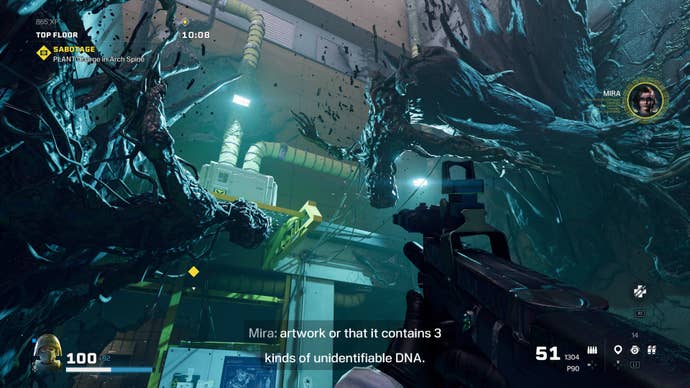
To accompany this newfound Archean outbreak is lore… so much lore. Every challenge you complete comes with a small excerpt about the parasite; there is an entire codex filled with interesting tidbits about the operators, the missions, and the Archaeans you run into. This game goes a long way into humanising three operators in particular – Ash, Mira, and Thermite – who often act as voices of encouragement or exposition during missions. Injections of these personalities are few and far between, but for narrative glue that sticks the different zones together the cinematics are a nice touch and are visually gorgeous.
This of course brings me to the Proteans, which act as bosses in Rainbow Six: Extraction. Through these the game gets so close to embracing the setting, having players enter singularities contained on the map to face off against the Archeans' twisted replications of the operators. “Finally,” I gasp as I see a weird squishy organic Sludge (who I will now refer to as Slimy Sledge) erupt into this alternative reality mine I’ve found myself in. “Now we can see get some proper weird stuff.” Weird stuff is certainly there, in excess! Slimy Sledge shoots waves of lighting from his hammer, he teleports behind you and can send out this vast explosion of blood and goop all around him. It felt like this was the moment the team could really go nuts. But it’s sparse, it’s so so sparse.
It’s this and more that is lost in the balancing act at the heart of Rainbow Six: Extraction, the crucial cargo that is shed as the game walks a tightrope between its tactical military FPS roots and the sci-fi adventure it has embarked on. The game has removed much of the weapon customisation, limiting it to a choice of what sight to use and whether to bring a silencer or an alternative option that improves your damage. It’s a faux choice, a way of making a binary decision - to go in loud or quiet - more involved. Rappelling up or down buildings has also been sacrificed at the altar of this sci-fi endeavour, and it may have felt worth it too, if the game had embraced the wackiness inherent to this decision with both hands.
Would doing so cause the pre-existing fanbase for Rainbow Six to roll their eyes? Maybe - but if the game is already going to have aliens that destroy the Statue of Liberty and singularities that teleport you to what very well could be another time or dimension for epic boss fights, you might as well go ham.
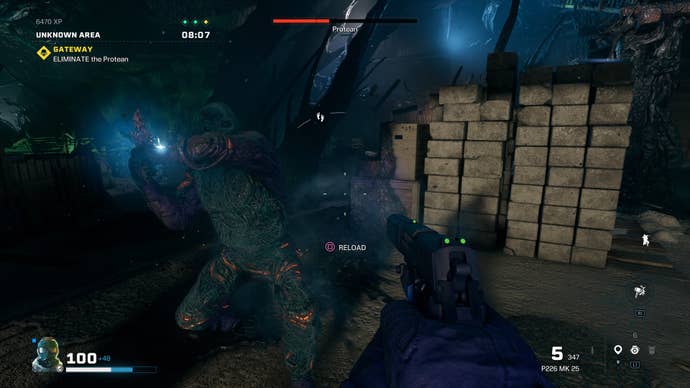
I also worry about the game’s longevity. Whereas Rainbow Six: Siege has inherent staying power through it’s PvP nature, where people will stick around and compete for higher ranks, the aforementioned assignments and Maelstrom protocols with their weekly modifiers are something I don’t see people sticking around for.
Enter Game Pass, which offers the game to anyone with a subscription, and the future looks a little brighter for Rainbow Six: Extraction. The idea of paying $40 or $45 for the game would have frankly been a long shot for many potential players, but having it for a month at the low cost of £10.99? Okay, you’re starting to sound a bit more tempting now. Even better is the buddy system Ubisoft has allowed for Rainbow Six: Extraction - which allows someone who owns the game to invite up to two of their friends to play, which when accepted starts a two week countdown that when finished ends the trial. A free game? For two whole weeks? Yeah, I can see a bunch of friends being willing and able to tackle this game for a while, and I’m sure a few of them will be happy to buy it afterwards too.
So overall, with all things considered, is Rainbow Six: Extraction a good game? Yeah, it’s alright. For my tastes, it doesn’t quite go far enough in some places, and it has lost a bit of that identity that makes Rainbow Six games special, but if you’ve got a few friends who are curious about it then you’ll have a blast jumping into it. It retains that slow, methodical gameplay that is so addictive to a certain kind of player, so I have no doubts that this game will remain a weekly venture for a community out there, somewhere. Whether or not it can retain that playerbase is something we’ll have to keep an eye on.



